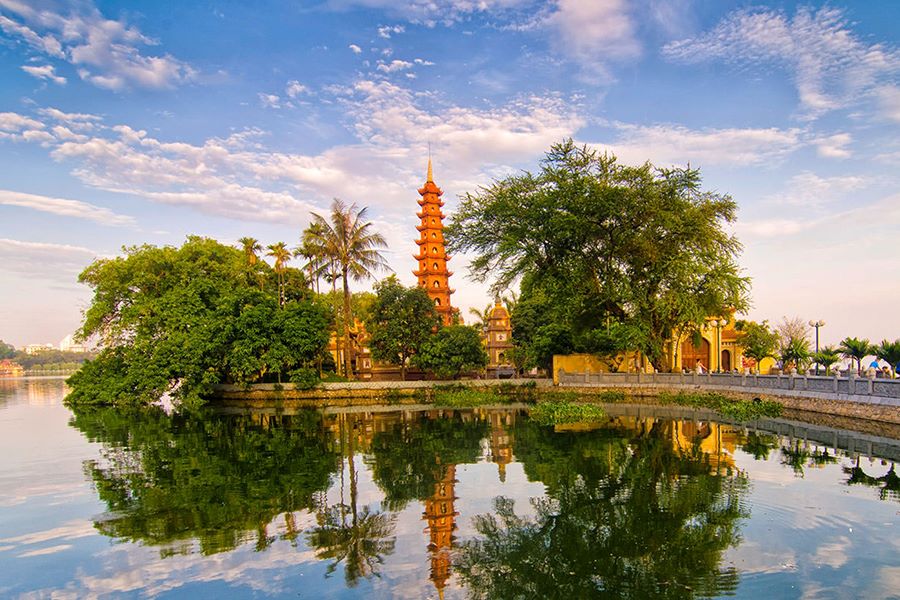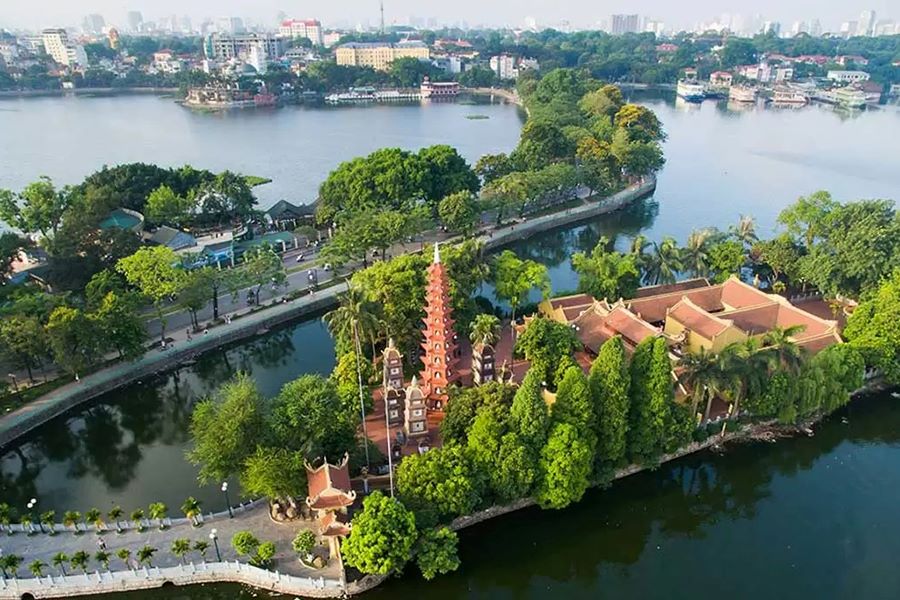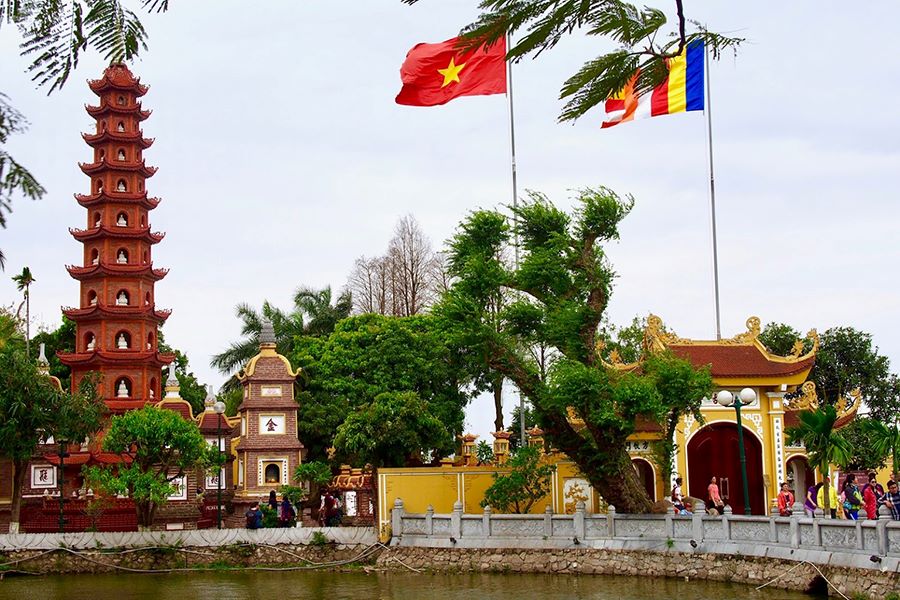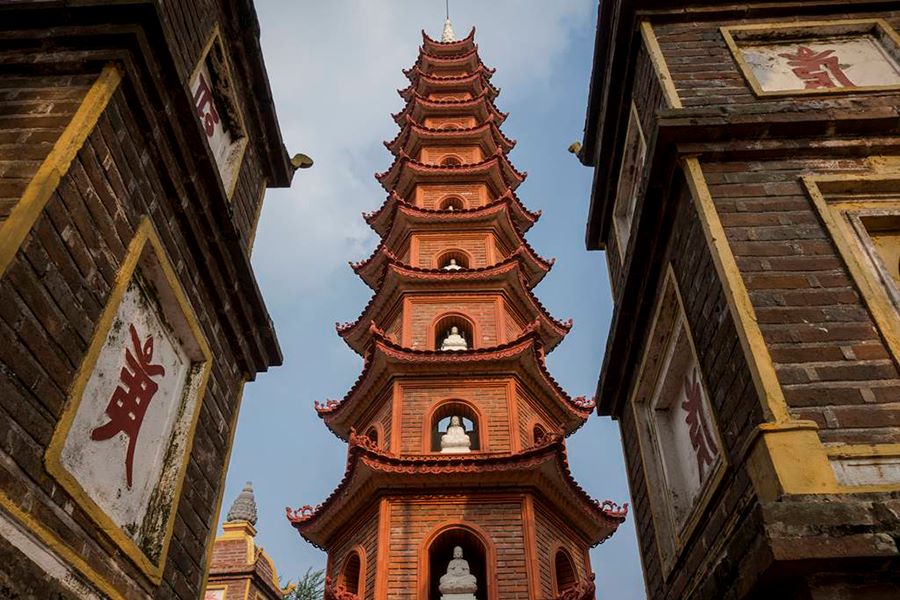Tran Quoc Pagoda is one of the most famous Hanoi tourist attractions. With its exceptional architecture, calming scenery, and significant cultural values, this place is definitely an unmissable destination for your exploration in the capital of Vietnam. Being the oldest pagoda in Hanoi, Tran Quoc Pagoda is known as a sacred “pearl” in the middle of West Lake. This is a famous religious and cultural attraction that preserves many ancient features of Vietnam’s capital. Coming to the pagoda, tourists in tours with Vietnam Vision Holidays will surely enjoy the peaceful moments and unique experiences that this place offers.
Contents
About Tran Quoc Pagoda – the oldest pagoda in Hanoi
Tran Quoc Pagoda opening hours:
Regular days: 8 AM – 4 PM
Lunar New Year’s Eve: all night
The 1st and 15th days of every lunar month: 6 AM – 6 PM
Tran Quoc Pagoda entrance fee: Free entrance
Located on a small islet of West Lake (Tay Ho District, Hanoi), Tran Quoc Pagoda used to be the Buddhist center of the Ly–Tran Dynasties in Thang Long Citadel (now Hanoi). Today, the pagoda is famous for its unique architecture and cultural significance. Lying in the middle of a vast and quiet lake, the pagoda brings a feeling of relaxation and peace to everyone. In 2016, the pagoda was listed by the British Daily Mail as one of the 16 most beautiful pagodas in the world.
The pagoda is most crowded on the 1st or 15th day of the lunar month, especially during the Tet holiday, when people come to this place to burn incense and pray for good luck. Therefore, it is suggested that you visit the pagoda during these times to experience the religious atmosphere and activities here. Or you can also visit the pagoda on regular days for a calmer and more relaxing vibe.
The long history of Tran Quoc Pagoda Hanoi Vietnam
Dating back to 1,500 years ago, Tran Quoc Pagoda was originally named Khai Quoc Pagoda, built in 541 in the Early Ly Dynasty. At that time, the pagoda was located near the banks of the Red River, so when the dyke collapsed in 1615, the pagoda was relocated to Yen Phu dyke in the Kim Nguu mound area.
The pagoda’s name was changed to Tran Quoc during the reign of King Le Hy Tong (1681 – 1705), in the hope that this would be a place to help people repel natural disasters and to bring a peaceful life to people. The name “Tran Quoc” is used to this day.
With its massive history, culture, and architectural values, the pagoda was recognized as a National Historical and Cultural Relic in 1989.
Who does Tran Quoc Pagoda Hanoi worship?
Tran Quoc Pagoda worships Amitabha Buddha, Shakyamuni Buddha, and Avalokitasvara Bodhisattva. There is also an altar dedicated to Guan Yu, Guan Ping, Zhou Shang, and Anathapindika and his attendants.
The exceptional architecture of Tran Quoc Pagoda
The pagoda shows the aesthetics of Eastern architecture. It follows the strict principles of Buddhism, which consists of 3 main houses: the Front House, the Incense Burning House, and the Upper House.
The Front House (Tien Duong)
The Front House in Tran Quoc Pagoda is home to many unique statues, especially the statue of Shakyamuni Buddha, which has been voted as one of the most beautiful Lying Buddha statues in Vietnam. Along with that are many other spectacular Buddha statues cast in bronze.
The Incense Burning House (Nha Thieu Huong)
The Incense Burning House, where visitors can burn incense as well as other votives, is one of the most crowded areas in the pagoda.
The Upper House (Thuong Dien)
The Upper House is home to 14 steles, engraved with poems of famous scholars at that time. The steles also provide lots of information and a full description of the pagoda’s renovations throughout dynasties. Thanks to them, the next generations will better know about the history of Tran Quoc Pagoda.
With impressive architecture and cultural significance, Tran Quoc Pagoda is definitely an unmissable Hanoi tourist attraction. Visiting this spiritual site, you can enjoy the peaceful scenery that calms your soul, as well as pray for good luck for your loved ones.




